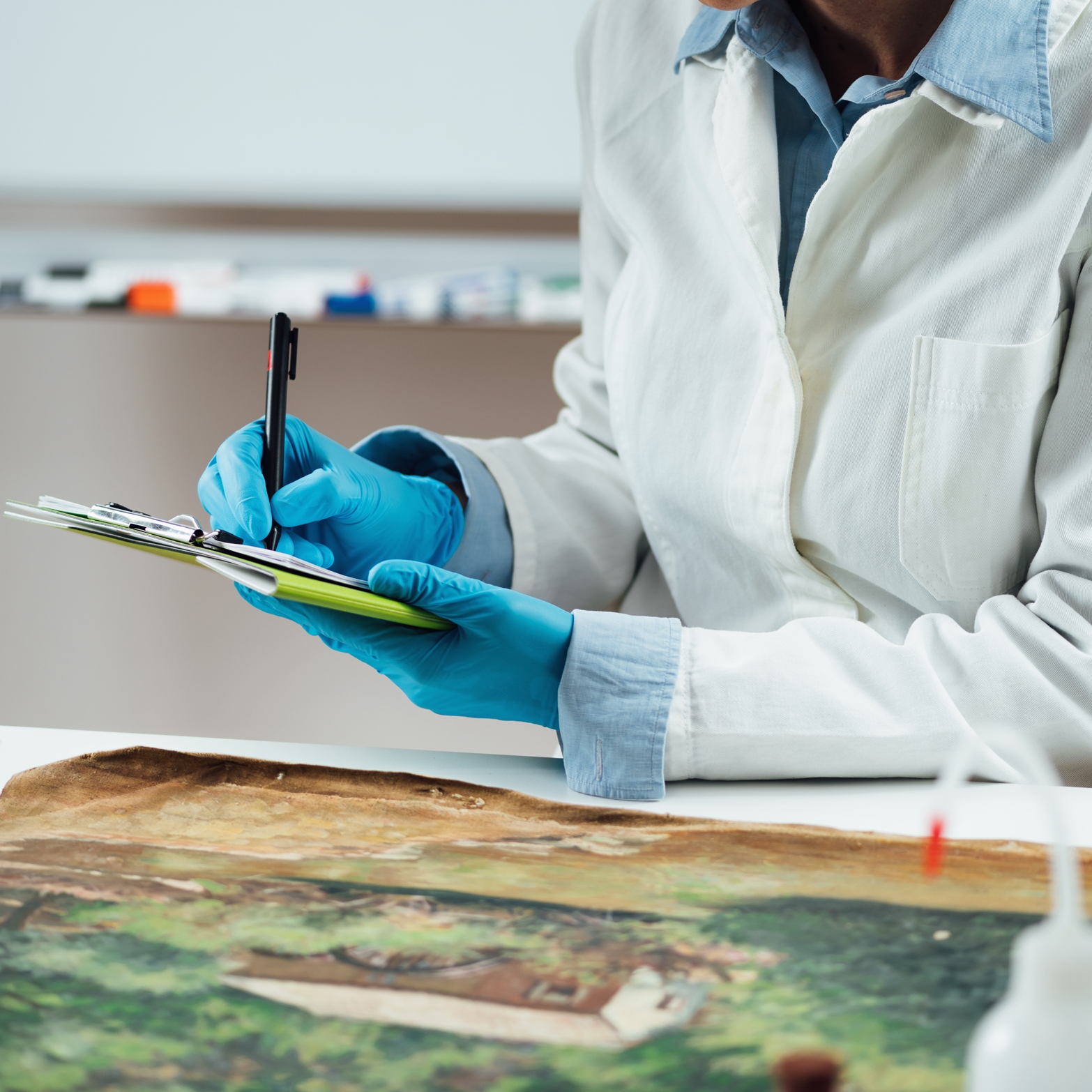Art conservation is a vital aspect of preserving the delicate, fragile global heritage for future generations. When performing conservation art packaging, art owners and collection managers should comply with top standards and industry requirements. Here, we cover the main principles of conservation-grade packaging that can save your art from environmental damage and natural deterioration.
Main Principles of Conservation Art Packaging
Specialized art logistics companies always rely on the tried and tested industry standards when packing art. Here are a couple of tips we’ve adopted from our experience and a review of reputable art institutions.
Archival, Chemically Stable Materials
The quality and chemical content of packing materials make a real difference when it comes to packing safety. The rule of thumb is to use acid-free and lignin-free materials, such as glassine and archival tissue paper, to prevent acid migration to the artwork’s surface. The latter is a highly undesirable process, which can cause discoloration or the art object’s general degradation.
Environmental Control and Stability
Packing materials should be selected with environmental stability in mind; they need to be able to maintain stable temperature and humidity. Slight environmental fluctuations are unavoidable, even in climate-controlled storage conditions, and conservation packaging should reduce their impact on the artwork’s integrity.
Proper Art Handling and Support
It’s vital to minimize the amount of physical art handling, limiting the art object’s movement and entrusting it to a team of trained, careful art handlers. It’s also important to use both hands when lifting artwork, employing professional supporting tools like trays or carts. Framed artwork should always be stored vertically. Double boxing may be employed for added protection of fragile art objects.
Protection from Physical Impact
Any artwork prepared for conservation should be protected against shock, vibration, and impact as much as possible. Professionals use dynamic curve structures for artwork cushioning inside the package, with foams with optimal strain absorption properties, backing boards, and foam inserts used, depending on the situation. The highest degree of protection is guaranteed by a wooden crate, which is a rigid, puncture-resistant structure with solid cushioning.
Rely on Our Expertise to Pack Your Art Properly
If you’re in doubt about your competence and knowledge of archival-grade materials and packing techniques, a wise decision is to rely on the expertise of capable, seasoned art handlers. Fine Art Shippers has a team of professionals with a deep understanding of packing nuances, equipped with museum-grade packing materials and knowledge of safety precautions. Hire us for conservation art packaging, and your collection will withstand all conditions for years to come.
